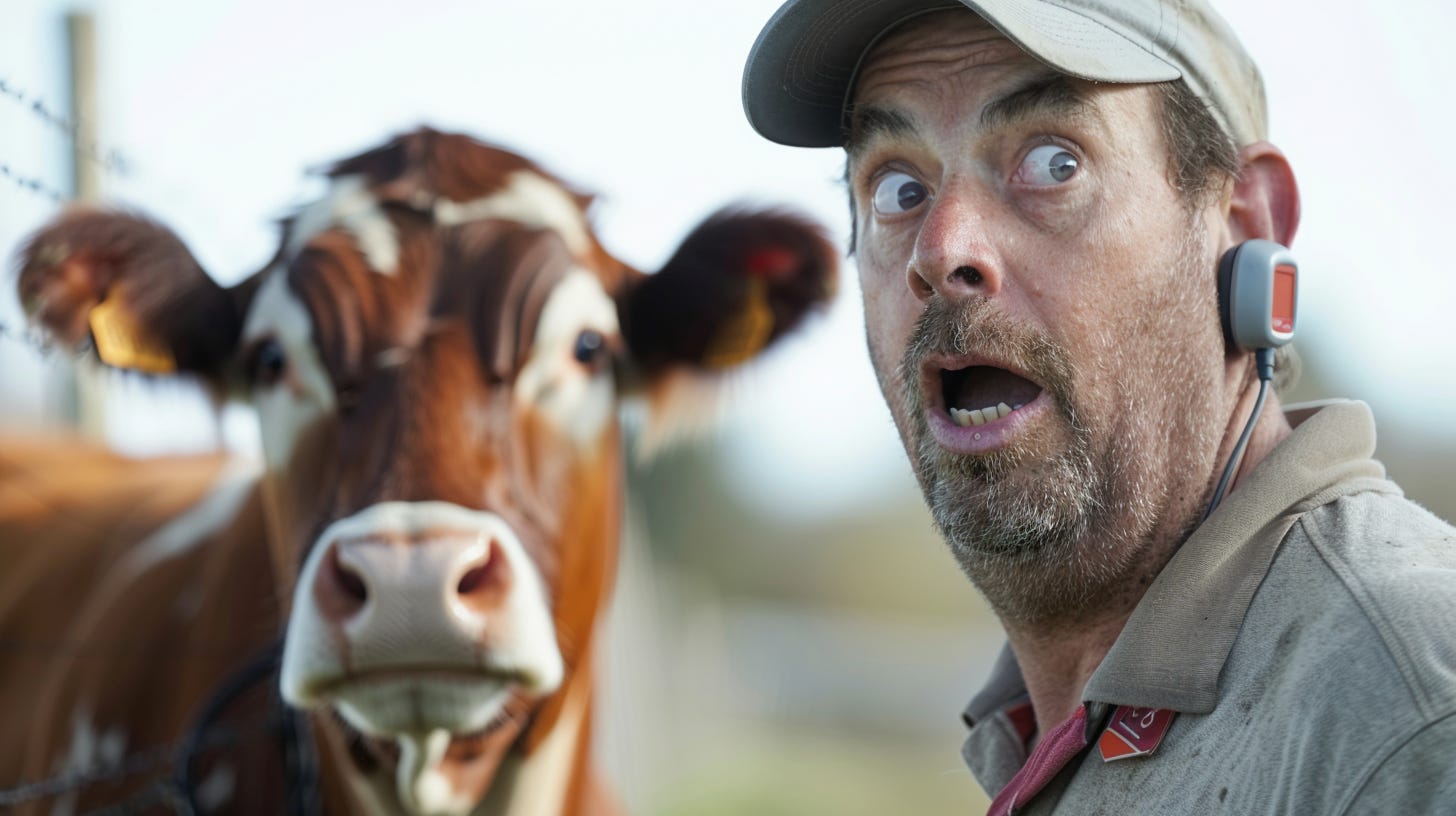Scientists to begin testing mRNA vaccines against bird flu in cattle
Plus, Bovaer gets a green light in the U.S.
Recent news confirms testing of an mRNA vaccine for bird flu in cattle.
If you thought the topic of national identification systems was controversial, ask a dairy producer or a cattle rancher for their thoughts on using mRNA vaccines in livestock. In my experience, livestock producers hold strong opinions on the topic.
Tell me what you think about mRNA vaccines. (Note: There are currently no mRNA vaccines approved for or used in cattle.)
Bovaer gets a green light in the U.S.
The FDA recently confirmed the safety of enteric methane-reducing feed ingredient Bovaer, paving the way for its commercial use in the U.S.
Read more here.
Nigerian dairy farmers to join country’s animal ID program
Dairy farmers in Nigeria have committed to be part of their country’s national animal identification program. Read more here.
They will join countries such as Australia, Canada, New Zealand and the European Union (EU) (this is not a comprehensive list) that also have national animal identification programs.
This news normally would have been deleted quickly from my email, but I recently heard a theory that national ID systems help accelerate data sharing because they create one true ID factor that all other data can be tied to.
It’s an interesting theory and one that I’ll be digging into a bit more. Thankfully, there is some research on the topic. If you have thoughts you’d like to share, especially those of you who live in countries outside the U.S. that participate in a national ID program, please email me with your thoughts.
Do national ID systems accelerate the sharing and integration of data? Comment on this post or send me an email.
Cow tech helps U.S. farmer determine the cost of HPAI outbreak on his farm
With the help of Michigan State University, one dairy farmer has used his rumen bolus technology from SmaXtec to identify the subclinical and clinical symptoms of his cows and track the cost of the disease on his farm.
Read more here.
Researchers show how to monitor grazing cattle with sensors and drones
Technology to track animals in confinement has reached mass adoption status. But technology to track animals on pasture and range is still emerging. Researchers in Nigeria recently published work showing that activity and health monitoring of cattle on pasture or range could be possible with integration of data from sensors and drones (UAVs).
Check out how they did it here.
Do virtual fence cues make a cow’s heart rate increase?
Recent research shows cows in virtual fencing systems experience minimal stress from audio or electric cues that warn the cow is approaching a virtual boundary. Scientists from the University of Nebraska and Oregon State University showed that cows’ heart rates did increase when exposed to virtual fencing cues, but heart rates typically returned to baseline within 30 seconds to four minutes of receiving a cue.
Read more about the study here.
New method makes hydrogen fuel from solar power and manure biochar
Researchers have shown that biochar from manure can aid in the production of hydrogen-based fuels in a method that extracts hydrogen from water. Typically, fossil fuels are required to make the extraction possible. But the new method of including biochar allows less intensive renewable energy sources (such as wind or solar) to be used. That means the process would be carbon neutral and net positive for energy creation.
Read more here.
Dairy profit projections from ZISK
Projected profitability for the next 12 months for two dairy herd sizes INCREASED in recent profit projections from ZISK.
ZISK is a profit projection smartphone app that tracks individual dairy farm profitability based on current CME board prices. Projections for a 1,000-cow dairy producing an average of 80 pounds of milk per cow and a 2,500-cow dairy producing an average of 85 pounds of milk per cow are provided.
12-month dairy farm profit projections (as of June 6, 2024):
1,000-cow dairy = $777,700 (UP about $102,700 since the end of May)
2,500-cow dairy = $2.725 million (UP about $265,000 since the end of May)






